Lungiswa Gqunta’s dreamscapes address tangled colonial legacies at Henry Moore Institute
South African artist Lungiswa Gqunta explores knowledge systems, spirituality and collective experiences in her first solo UK exhibition, ‘Sleep in Witness’ at the Henry Moore Institute, Leeds
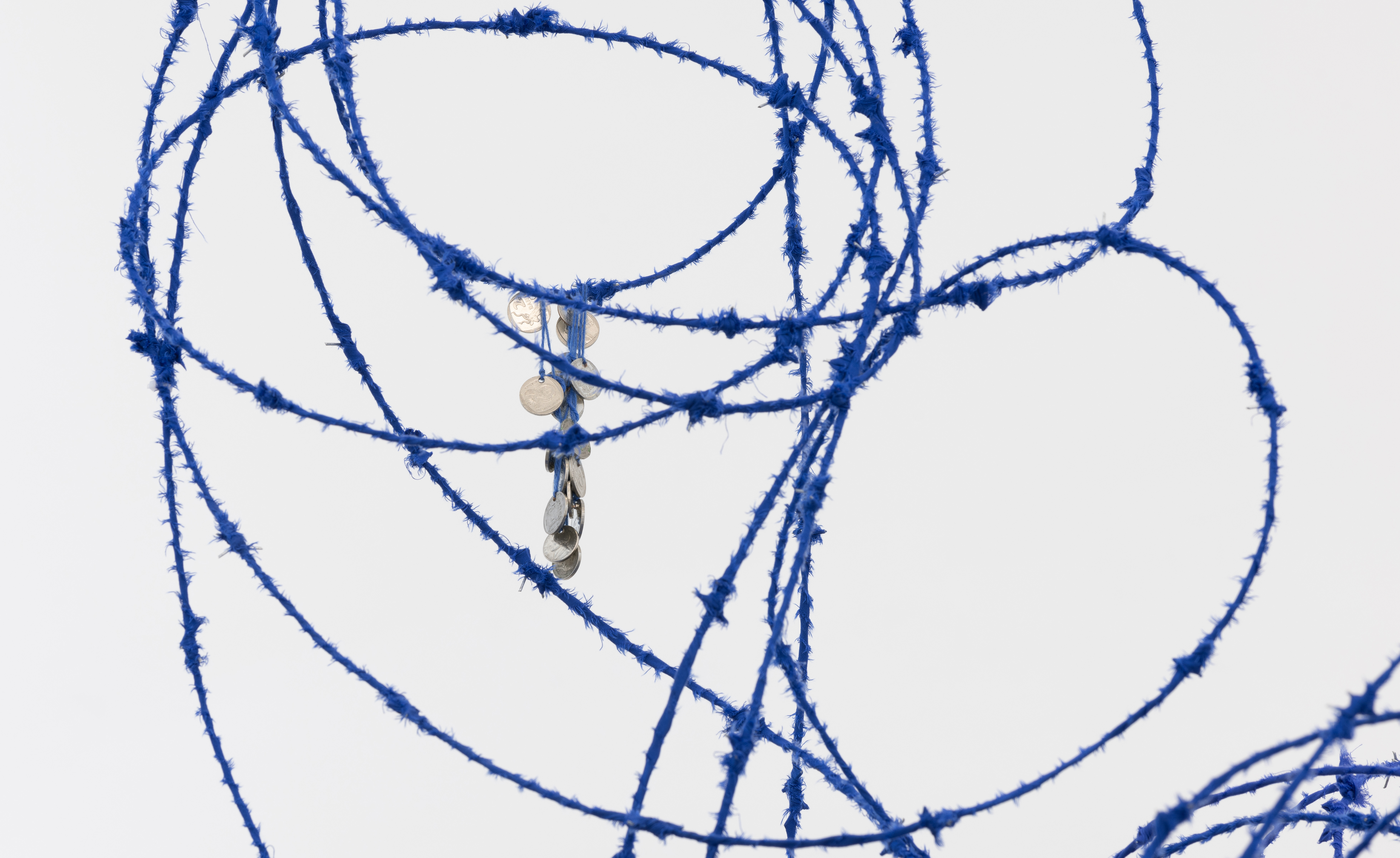
Rob Harris - Photography
The ‘dreamscapes’ of South African artist Lungiswa Gqunta take over three rooms of the Henry Moore Institute in Leeds, for her UK solo exhibition ‘Sleep in Witness’, and incite conversations about knowledge systems, spirituality and collective experiences in a society impacted by colonial legacies. Gqunta appears enlightened by dreams, she records them as a spiritual practice and connects with them to envision her work (the team around her were left to trust the artist's instinct while she created the exhibition’s landscapes, following her intuition to mould a clay floor and hang tangled ‘waves’ from the ceiling).
It is through dreams, and conversations with mothers in her family and with friends, that the artist gains an understanding of her experiences as a Black woman, establishing a platform for a form of knowledge that isn’t commonly accepted in western academia. Curator Laurence Sillars explains that ‘systems of apartheid have discredited so many different ways of knowing and of passing on knowledge’. Gqunta ‘brings personal identities and journeys back to the fore; this exhibition presents other ways of knowing and gathering information.’
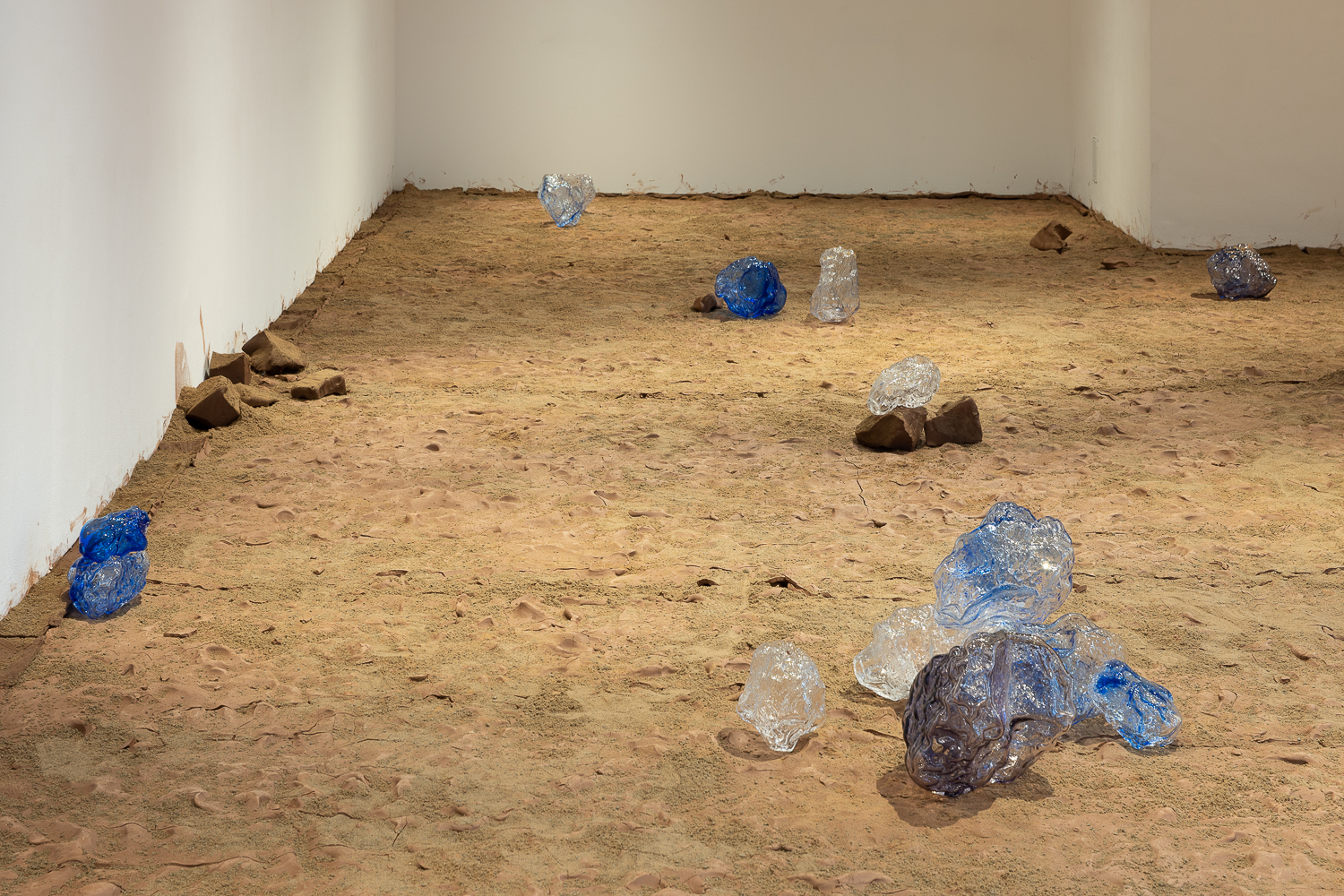
Lungiswa Gqunta, Zinodaka, 2022 at Henry Moore Institute
Zinodaka, 2022, fills the first room of the exhibition; a layer of dried clay covers the entirety of the floor, manipulated by Gqunta’s bare feet, to create ridges and hills that form a landscape envisioned in her sleep. Aptly named ‘water rocks’ are sprinkled across the scene – hollow and crystal blue. They were moulded by the pressing of rocks into their blown-glass surface, leaving behind an imprint of the natural environment.
The clay floor has cracked on drying, and walking around the space makes the crevices bigger. Each step or shift of weight produces a crunch, reminding us of our unexpected impact. There is much to intrigue in Gqunta’s work and its engagement with our senses widens the potential audience. It’s easy to imagine the room filled with children, delighting in the crunching under their feet and staring into misshapen spheres of ‘water’.
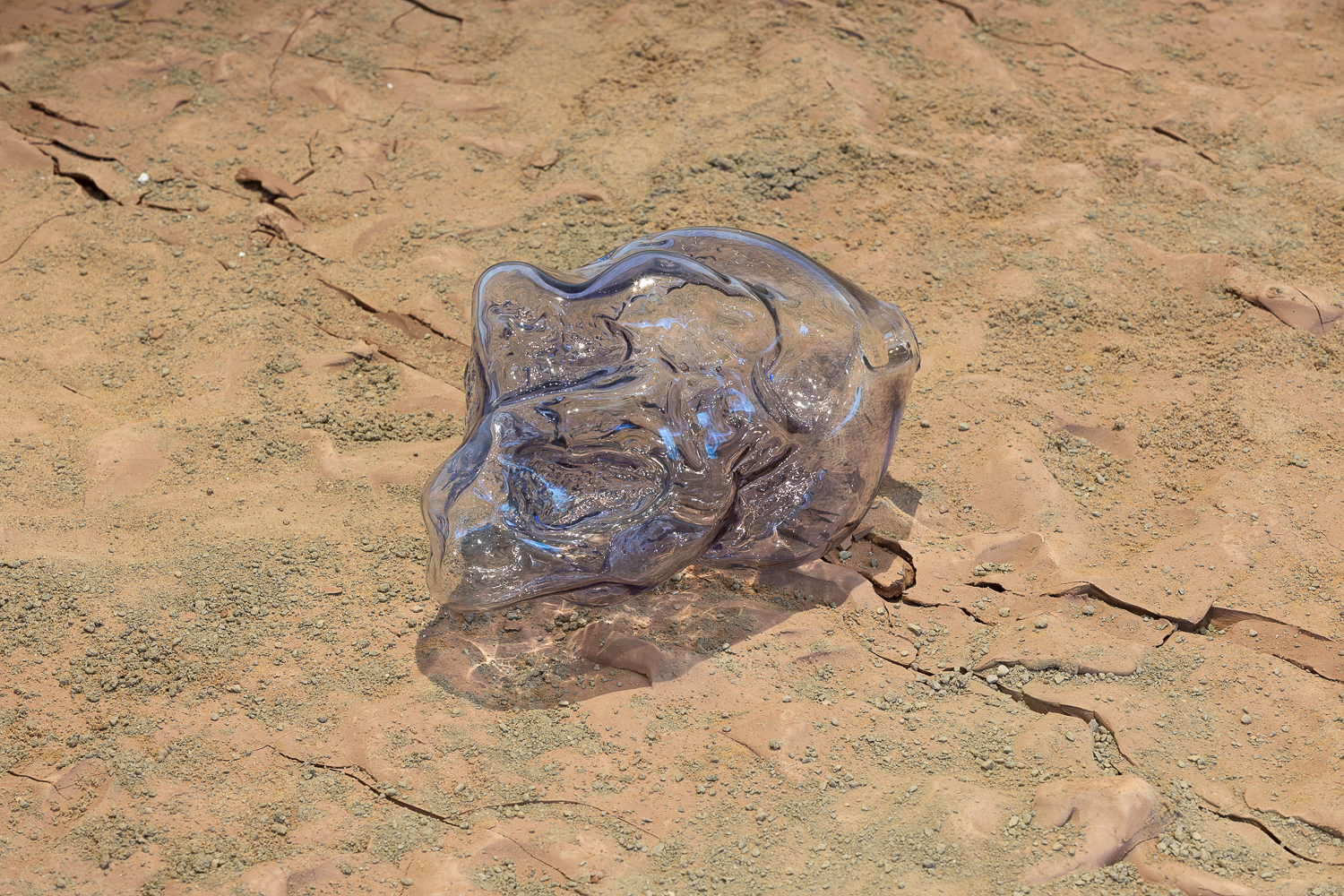
Lungiswa Gqunta, Zinodaka, 2022 at Henry Moore Institute
Zinodaka gives a sense of contributing to the breaking of something, which is simultaneously blatant in the landscape of lingering colonialism in South Africa, and subtle sitting in an art gallery in Leeds.
Gqunta says that she ‘likes the idea of a collision of two different parts, whether it's peacefully or violently’. The layered experience of dreams is a fundamental concept to bring to ‘Sleep in Witness’ to understand its construction. Gqunta wanted the show to feel like moving through different dreams; it jumps from the cracked, water-dotted landscape of Zinodaka into the tangle of two crashing waves in Ntabamanzi, 2022.
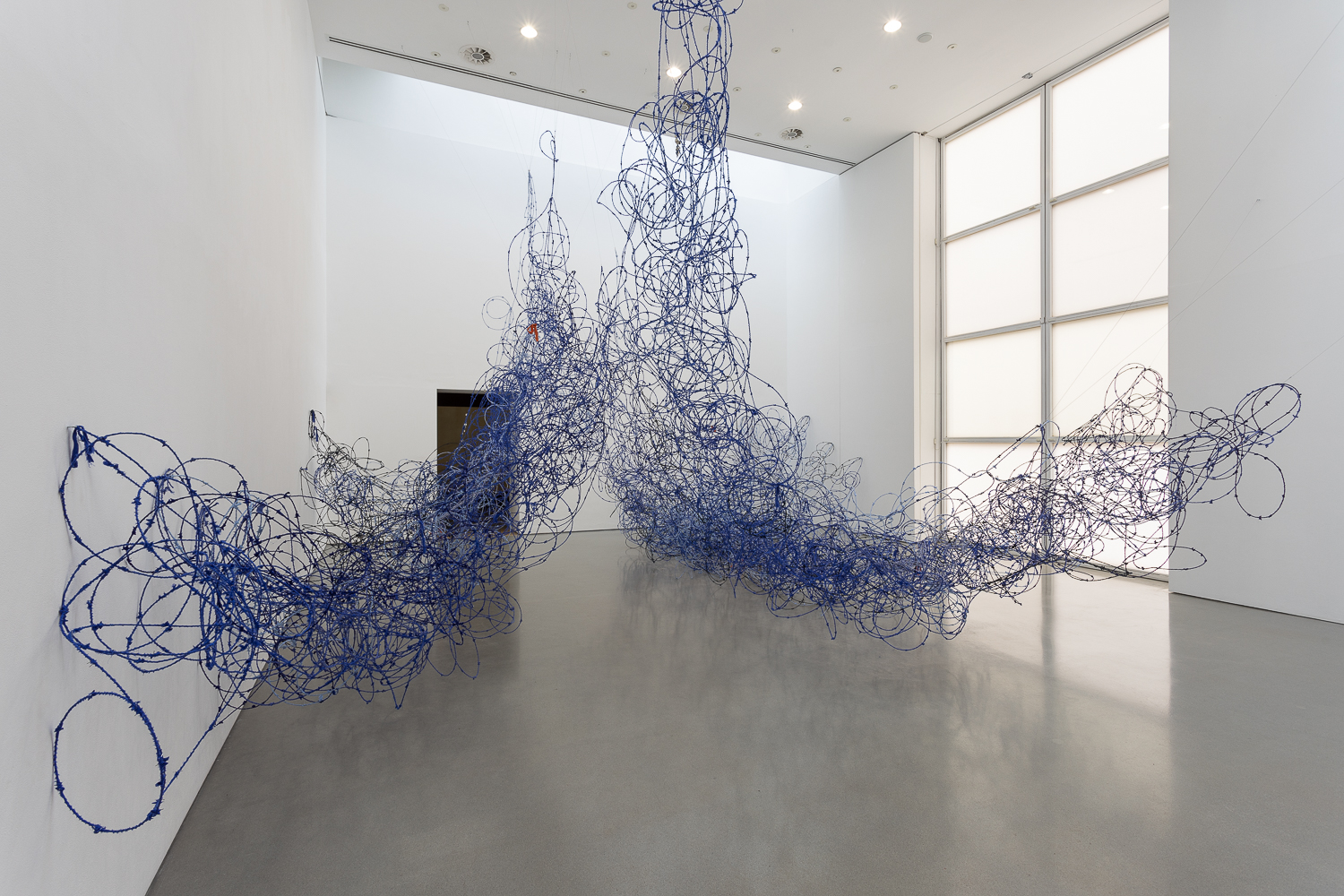
Lungiswa Gqunta, Ntabamanzi, 2022 at Henry Moore Institute.
Harnessing a technique used previously in Tending to the Harvest of Dreams, 2021, Gqunta and her team spent seven months wrapping barbed wire in strips of blue fabric and allowed the wire to retain its curled structure. The tangles start on the floor at opposite sides of the room and rise up, meeting in the middle and leaving an arch to walk under.
Wallpaper* Newsletter
Receive our daily digest of inspiration, escapism and design stories from around the world direct to your inbox.
The room triggers images of parting seas and crashing waves, small spikes of wire stick out from under the blue wrapping, again, ensuring we take note of our bodies – this time as a result of the potential danger surrounding us. Metal coins are tangled in the waves – a detail alluding to the hope and wisdom of the ocean.
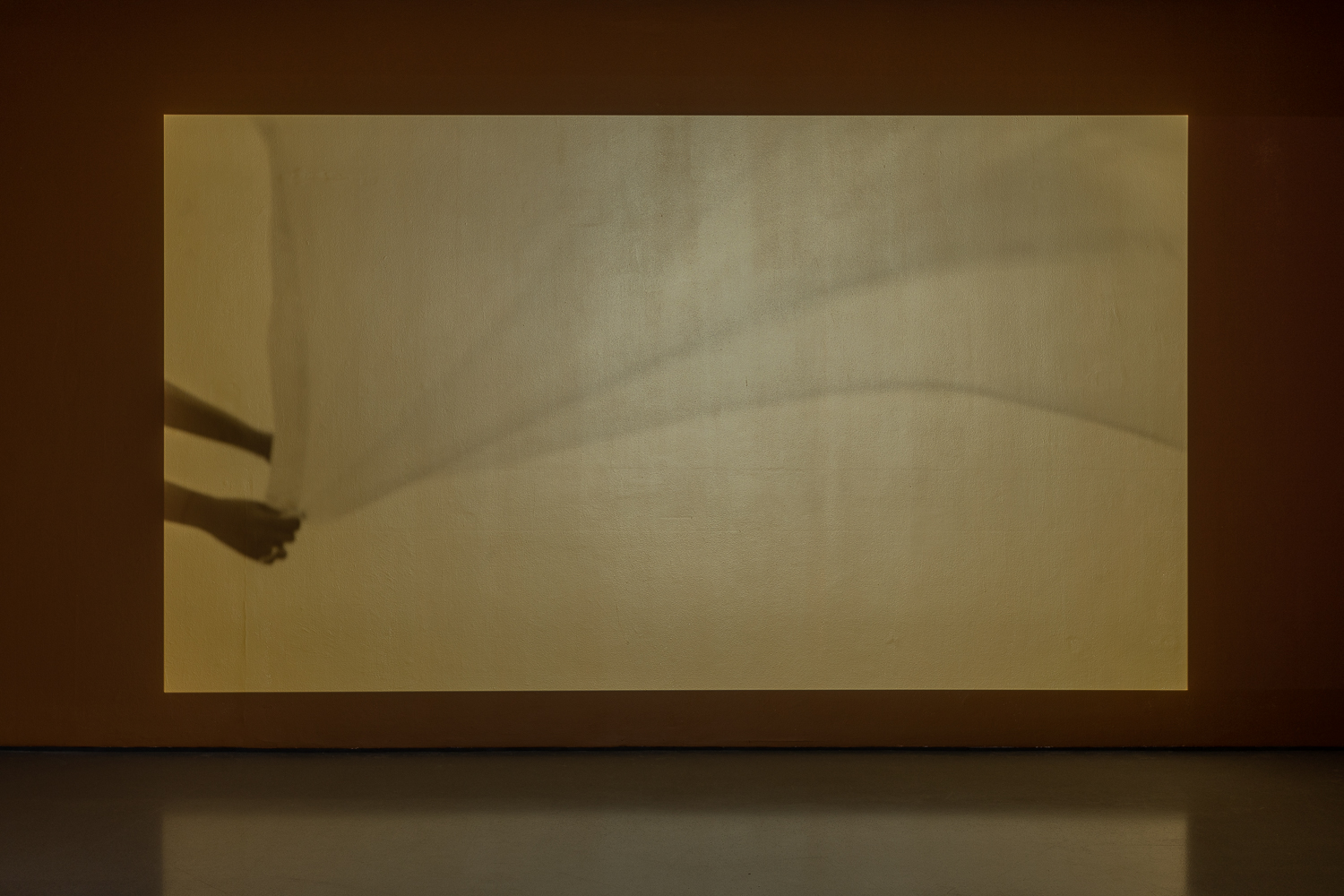
Lungiswa Gqunta, Gathering, 2019 at Henry Moore Institute
Room three contains a 15-minute video, which Gqunta describes as ‘a place of rest’. The original name for the work – now called Gathering, 2019 – was Riotous Assembly, referring to the Riotous Assemblies act established in South Africa in 1956 that made it illegal for a certain number of Black people to gather in one place. ‘I thought [that coming together] was really beautiful because it's the communal spaces in which a lot of rejuvenation and a lot of refusal, and denying oppressive systems happen,’ says Gqunta.
The black and white video is projected onto a brown wall, echoing the brown of the clay floor in Zinodaka, 2022, and shows Gqunta and a friend, singing ‘yakhal’inkomo’ (the cry of the bull in Nguni languages, which historically refers to the unspeakable pain of domination for Black people in South Africa under aparthied), ritualistically, comfortingly, while folding sheets. It seems to acknowledge and reframe an historical and deeply rooted struggle felt by Black people living under oppressive systems.
They spend the 15 minutes pausing for breaks and coming together, sheets appearing to flow in a continuation of the show’s water theme. One major thing, says Sillars, is that ‘this piece stands back-to-back with the photograph of Gqunta’s family on the outside of the building’. It brings a continuity to the structure of the show and, falling perfectly in thematic line with the disordered and associative nature of dreams, gives us one last detail of thought: where there are dreams, there are ongoing stories and a continuous collision of worlds
INFORMATION
’Sleep in Witness’ is on until 30 October 2022
henry-moore.org
Martha Elliott is the Junior Digital News Editor at Wallpaper*. After graduating from university she worked in arts-based behavioural therapy, then embarked on a career in journalism, joining Wallpaper* at the start of 2022. She reports on art, design and architecture, as well as covering regular news stories across all channels.
-
 All-In is the Paris-based label making full-force fashion for main character dressing
All-In is the Paris-based label making full-force fashion for main character dressingPart of our monthly Uprising series, Wallpaper* meets Benjamin Barron and Bror August Vestbø of All-In, the LVMH Prize-nominated label which bases its collections on a riotous cast of characters – real and imagined
By Orla Brennan
-
 Maserati joins forces with Giorgetti for a turbo-charged relationship
Maserati joins forces with Giorgetti for a turbo-charged relationshipAnnouncing their marriage during Milan Design Week, the brands unveiled a collection, a car and a long term commitment
By Hugo Macdonald
-
 Through an innovative new training program, Poltrona Frau aims to safeguard Italian craft
Through an innovative new training program, Poltrona Frau aims to safeguard Italian craftThe heritage furniture manufacturer is training a new generation of leather artisans
By Cristina Kiran Piotti
-
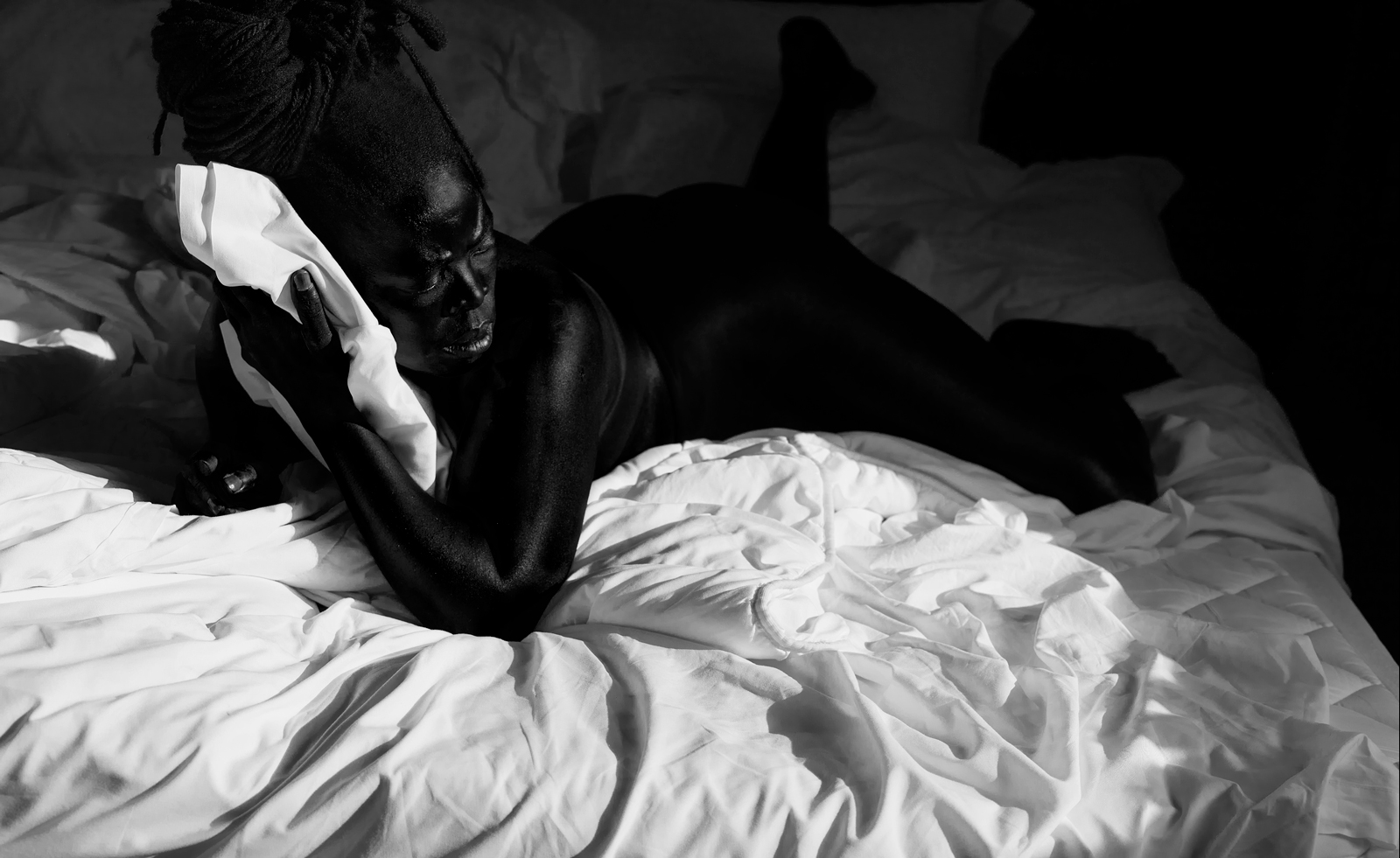 Zanele Muholi celebrates South Africa’s Black LGBTI communities in LA and London
Zanele Muholi celebrates South Africa’s Black LGBTI communities in LA and LondonZanele Muholi's portraits and sculptures are currently on show at Southern Guild Los Angeles and the Tate Modern, London
By Hannah Silver
-
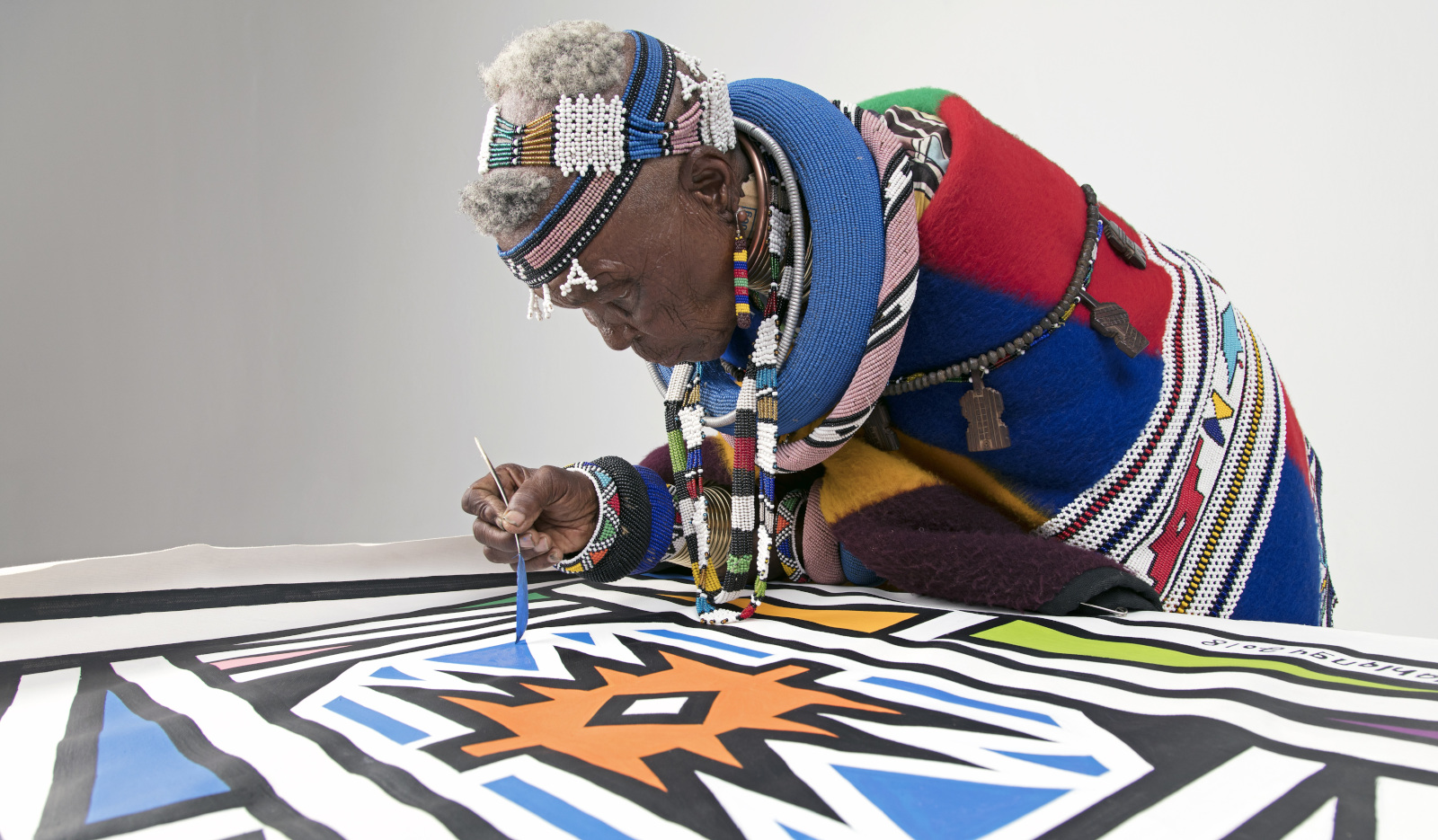 Esther Mahlangu’s first retrospective features the iconic BMW 525i Art Car
Esther Mahlangu’s first retrospective features the iconic BMW 525i Art CarEsther Mahlangu showcases ‘Then I knew I was good at painting’ at the Iziko Museums of South Africa in Cape Town
By Nargess Banks
-
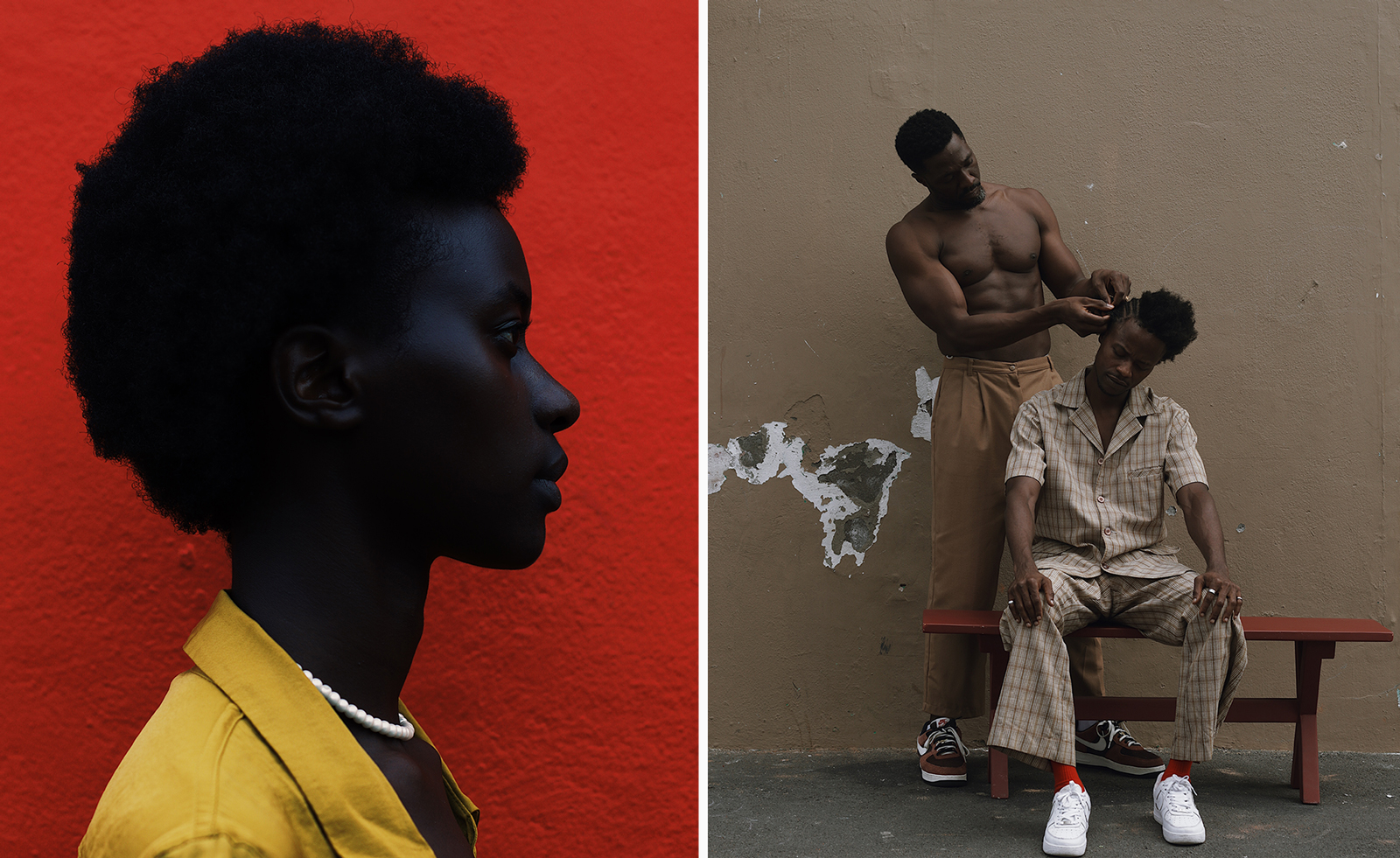 Now Gallery presents the vibrant culture of ‘A Young South Africa’ captured through the lens
Now Gallery presents the vibrant culture of ‘A Young South Africa’ captured through the lensNow Gallery’s ‘A Young South Africa, Human Stories’ showcases six inspiring photographers for the 2023
By Tianna Williams
-
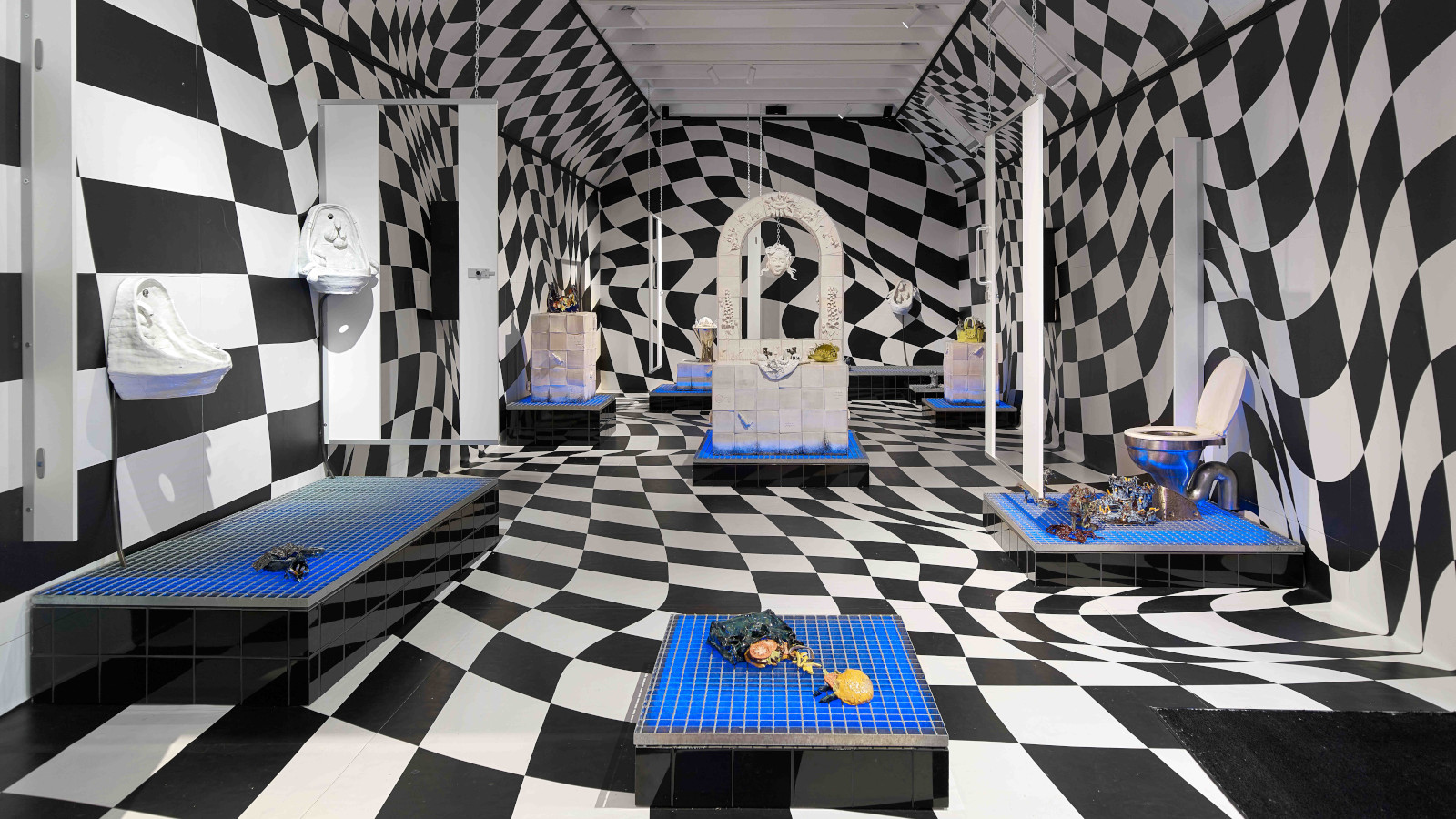 Edinburgh Art Festival 2023: from bog dancing to binge drinking
Edinburgh Art Festival 2023: from bog dancing to binge drinkingWhat to see at Edinburgh Art Festival 2023, championing women and queer artists, whether exploring Scottish bogland on film or casting hedonism in ceramic
By Amah-Rose Abrams
-
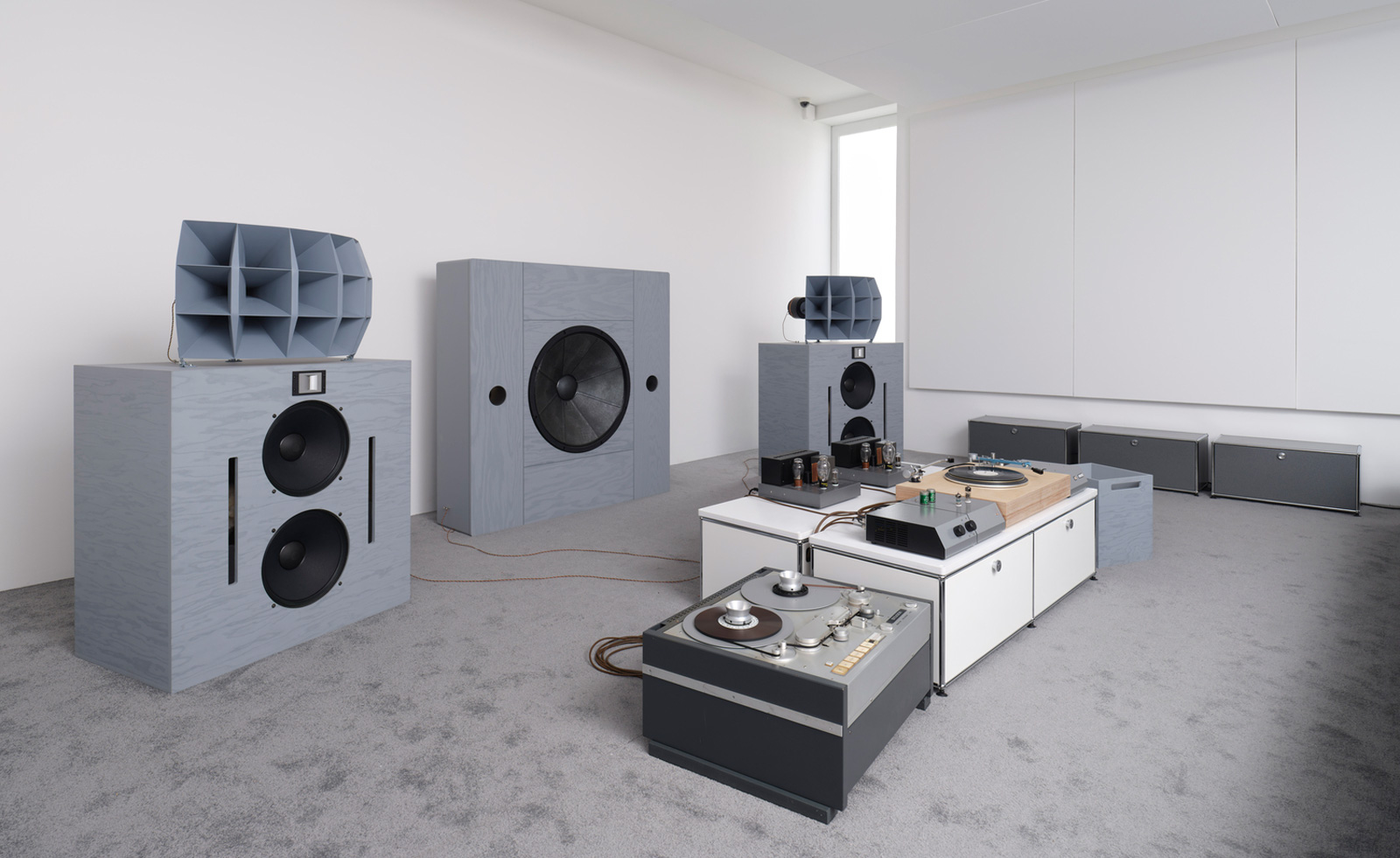 Last chance to see: Devon Turnbull’s ‘HiFi Listening Room Dream No. 1’ at Lisson Gallery, London
Last chance to see: Devon Turnbull’s ‘HiFi Listening Room Dream No. 1’ at Lisson Gallery, LondonDevon Turnbull/OJAS’ handmade sound system matches minimalist aesthetics with a profound audiophonic experience – he tells us more
By Jorinde Croese
-
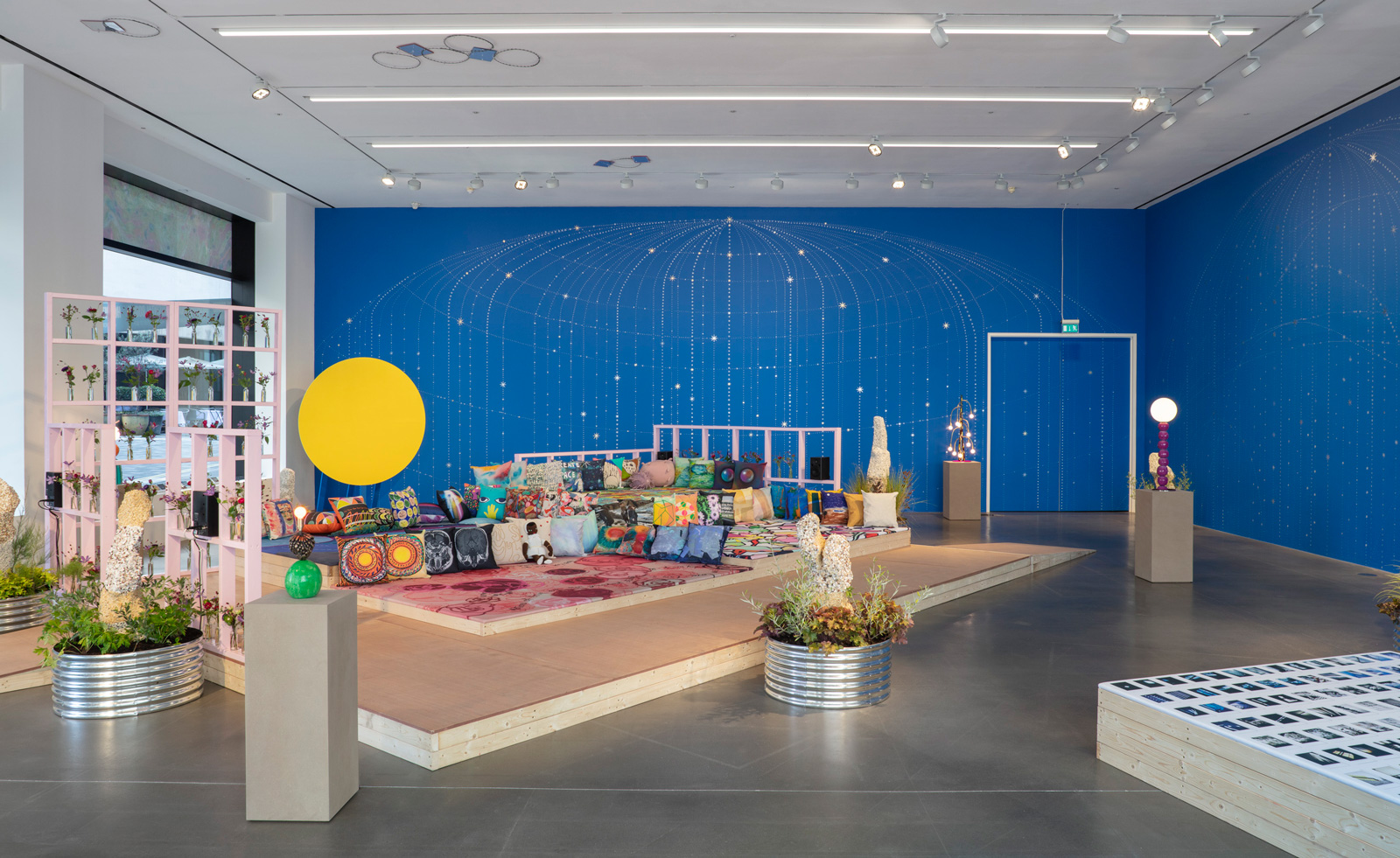 Hospital Rooms and Hauser & Wirth unite for a sensorial London exhibition and auction
Hospital Rooms and Hauser & Wirth unite for a sensorial London exhibition and auctionHospital Rooms and Hauser & Wirth are working together to raise money for arts and mental health charities
By Hannah Silver
-
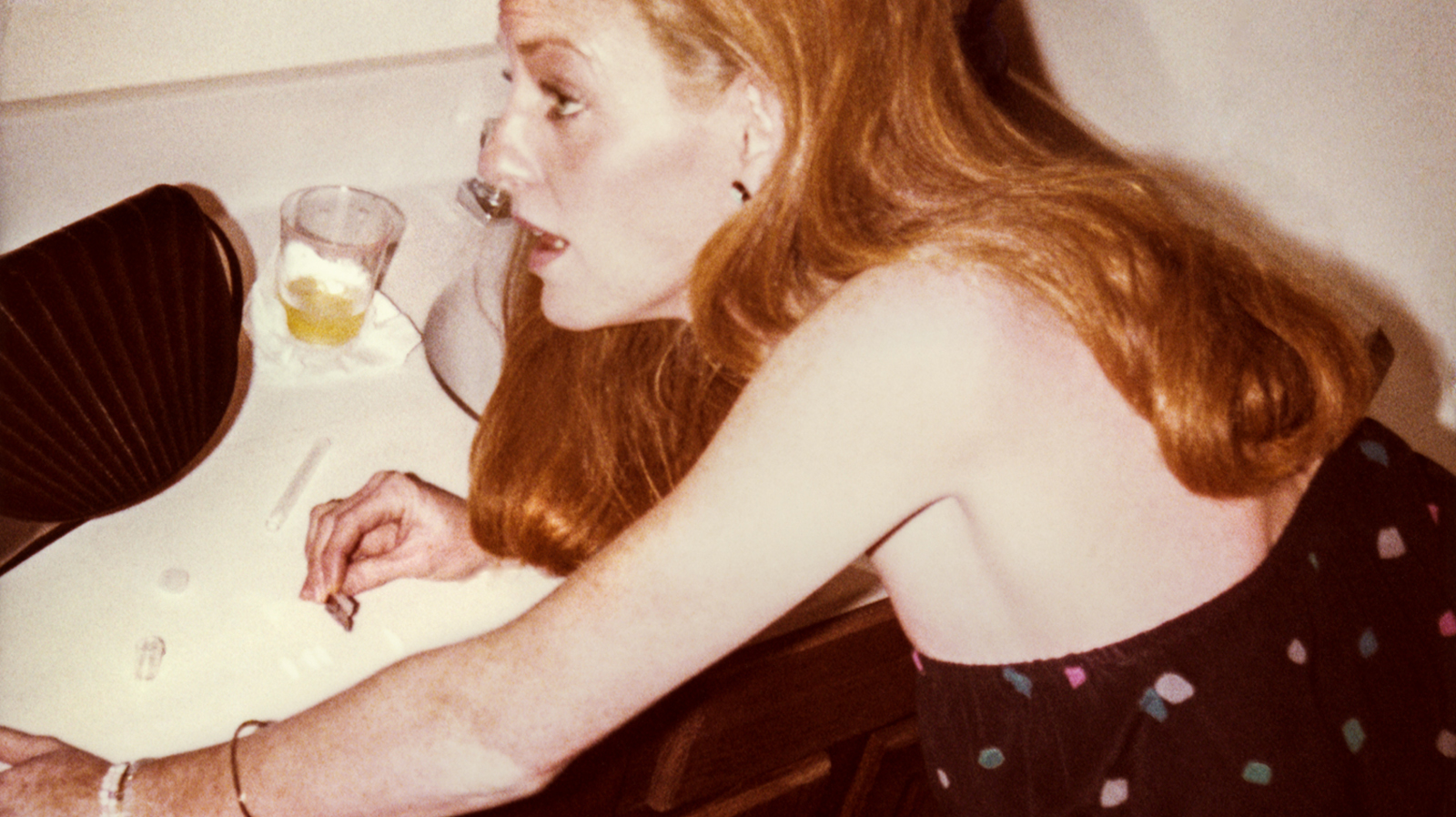 ‘These Americans’: Will Vogt documents the USA’s rich at play
‘These Americans’: Will Vogt documents the USA’s rich at playWill Vogt’s photo book ‘These Americans’ is a deep dive into a world of privilege and excess, spanning 1969 to 1996
By Sophie Gladstone
-
 Brian Eno extends his ambient realms with these environment-altering sculptures
Brian Eno extends his ambient realms with these environment-altering sculpturesBrian Eno exhibits his new light box sculptures in London, alongside a unique speaker and iconic works by the late American light artist Dan Flavin
By Jonathan Bell